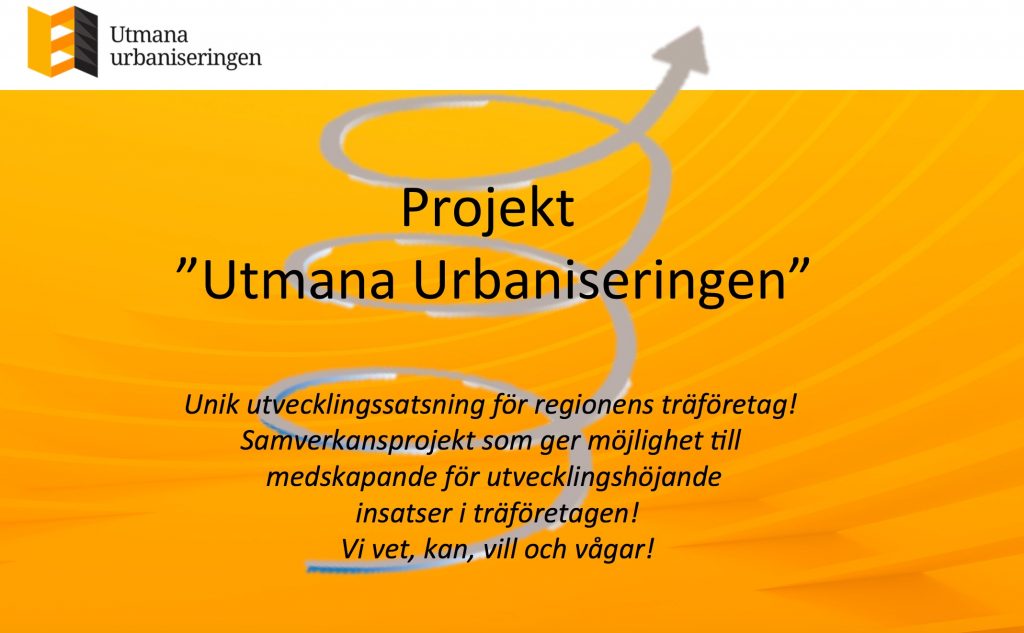The project was carried out in the form of nine work packages with activities within well-defined and delimited areas of action aimed primarily at the companies' owners, boards and management. For work packages 2-8 there were clearly defined goals in the form of measurable development results in the own company. Each participating company must achieve these goals.
One of the objectives of the project was to achieve the active participation of 25-30 companies. This objective was exceeded and has resulted in the project being regarded as unique by the financiers.
The work packages (sub-projects) are:
- Motivation
Introductory seminar to motivate active participation in subsequent parts. - Board work, for potential and existing members.
- Business plan.
Development of a business plan for 5-10 years. - Value basis.
The need and importance of a developed value base for the company. - Trademark.
What is a trademark and why is it needed? Definition of own brand and brand strategy. - E-commerce.
E-commerce issues with different levels of e-commerce platforms and business models. - Cooperation
New demands on the subcontractor chain as a result of changes in construction contractors' procurement process. - Competence
The need for and criteria for competence development and provision. - Capital
Information and conversations about access to future growth capital.
The companies had the opportunity to participate in all activities, but could also select the packages they wanted to participate in depending on their own needs. Each package is carried out once during the duration of the project. Depending on the participating companies' own resources, various activities could overlap.
At each introductory workshop, the wood companies in the region were invited to be informed, motivated and to share their interests for active participation. An external local/regional lecturer was hired, with insight into issues of values and brand strategy and, of course, how the board can function as a catalyst in the companies. Based on the companies' views and interests, a plan was drawn up for the implementation of other activity packages, sub-projects.
All sub-projects begin with a seminar where the purpose and goals of the package's activities are presented. The conditions of the individual companies were reviewed and documented. A work plan was drawn up for each participating company on how the package's sub-goals are to be achieved for the individual company. The continued work was carried out at the companies with the support of the project, which was intended to guide the company's board and management towards the interim goals. The project followed up the individual companies' goal fulfillment so that the activities were sustained over time. Each package ends with a half-day activity where all wood companies in the region were invited, and where experiences from the implementation were shared and discussed.
For effective implementation of the project and to meritoriously achieve the project goals, external experts were hired within the project. It was especially important to bring in the best competence to be able to support and push the companies in the implementation of the activities so that the working methods introduced in the activity packages are implemented in the companies' organization.
In its organization, the project worked actively for equal gender distribution in project groups, reference groups and steering groups. The working method included the steering group, reference groups and sub-project groups, during all their meetings, issues of equality, diversity and the environment were discussed and recorded.
The breadth of companies also provided the conditions to use the horizontal criteria to create conditions for changes related to gender equality and integration and thus goal fulfillment and growth. Environmental and climate issues within the wood industry are in great focus and are reinforced by the fact that the EU has defined wood as a sustainable material, renewable and carbon dioxide neutral, which is of great importance for a future sustainable societal development. Environmental and climate aspects are a natural part of the implementation of packages 2-8.
External communication, dissemination of results and learning will take place through result reports, targeted seminars/workshops, the project's website, as well as direct information to relevant associated companies. Learning also took place at board and steering group meetings as well as exchange of information with other projects/center formations in the area. Furthermore, the required competence was linked to the project according to the Swedish Growth Agency's guidelines for continuous evaluation.
Completion, preparation of final reporting and communication of the project's results took place to financiers and stakeholders. In addition, it was ensured that project results were managed, commercialized and further developed based on assessments of their potential.
Evaluation and internal control took place continuously. The documentation was formed the project report. The internal project reconciliation took place based on LTU's report. The sub-projects' resource consumption was reconciled against the achieved sub-results.
The project was a collaborative project owned and run by LTU, with Professor Dick Sandberg as project owner and with Lars Engman, Träbransch Norr AB as executive project coordinator.
Financing of the project took place through the European Regional Development Fund, the Regional Confederation and participating companies. The project's budget amounted to SEK 6.7 million.

